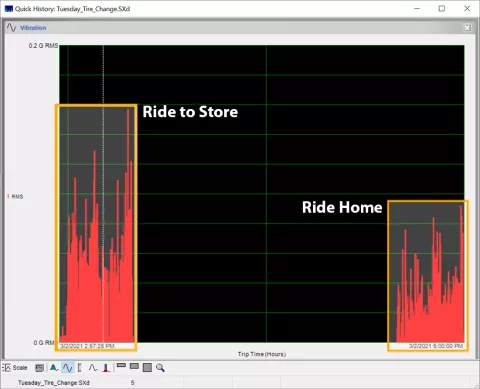
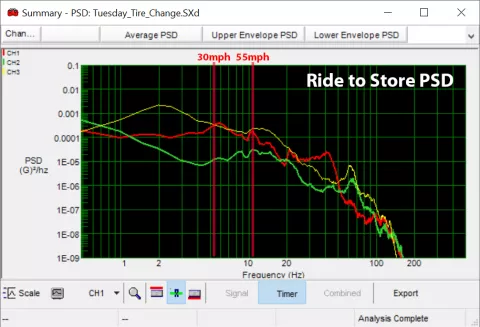
Continuing from Part 2 of this series
After establishing improved confidence in identifying tire effects on vehicle ride quality, I finally decided it was time to replace my tires all together. To document before and after tire change ride quality conditions, I decided to once again instrument my vehicle with a Lansmont SAVER 9XGPS, and record my drive both to and from the tire store – using the exact same route/roadways in each direction.
This route did not include freeway travel, my vehicle speed ranged more in the 30-55 mph range (6.0 – 10.5 Hz.). Below is the SaverXware Quick History view, showing both my ride to the tire store, and back home after the replacements had taken place.
In this view, each red bar represents one recorded 2-second time-domain event and the height of the bar represents the overall intensity of that event in terms of Grms (vibration intensity). From this quick, top-level view, it's clear that the ride improved significantly after the tires were changed.
By creating two separate summary PSD vibration profiles from the “Ride To” and “Ride Home” events above, we can evaluate the data in terms of its frequency content. Below is the summary PSD of my ride to the tire store.
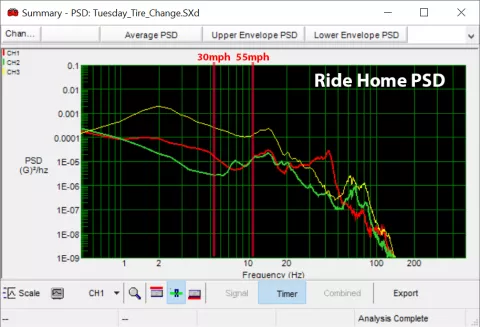
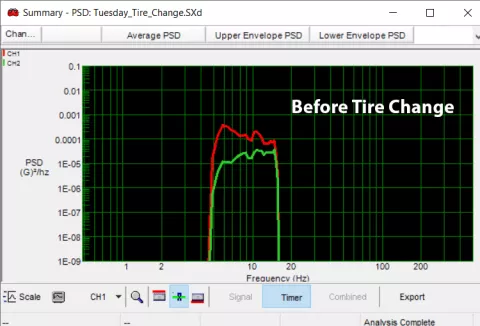
By turning off the vertical (yellow) channel from our view, we can focus on the lateral (red) and longitudinal (green) channels.
Additionally, we can use SaverXware ETC‘s cutoff filtering utility to further focus our view to just the bandwidth of specific interest, which allows us to emphasize the before and after change in ride quality from the lateral and longitudinal perspectives. Those specific before and after views are shown in the below animation, making the ride quality different more apparent.
When comparing the two PSD plots (before and after tire change), it’s visibly apparent there’s a significant reduction in the amount of lateral (red trace) dynamic energy in that 6.0 – 10.5 Hz. frequency range. Considering PSD plots are presented in log-log format, it’s sometimes hard to appreciate the differences in measured amplitudes, however the SAVER data confirms that after changing the tires, there was more than 40-times reduction in lateral energy at about 6 Hz and a reduction of 20-times at 10.5 Hz. If we export these PSDs, we can overlay them in Excel to provide another helpful way to compare the before and after ride summaries.
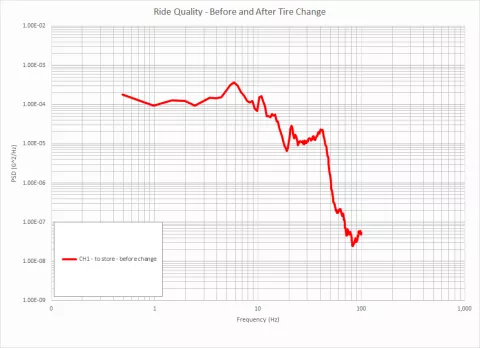
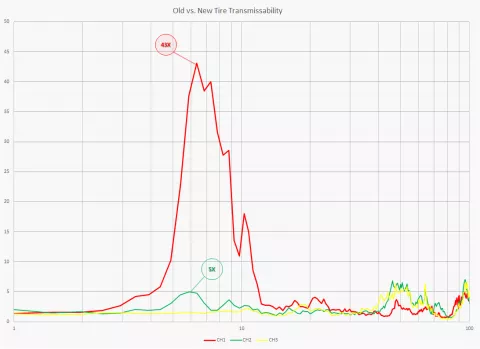
We can further present that data in a comparative plot that more clearly defines the magnitude of the ride quality changes after changing the tires. Not only was there a significant improvement from that lateral (red, side-to-side) motion perspective, there was also a five-times improvement in the longitudinal (green, front-to-back) motion.
In the next email, we’ll highlight how this technique can be used to identify out-of-balance tire issues with transport vehicles (trucks, trailers, trains).